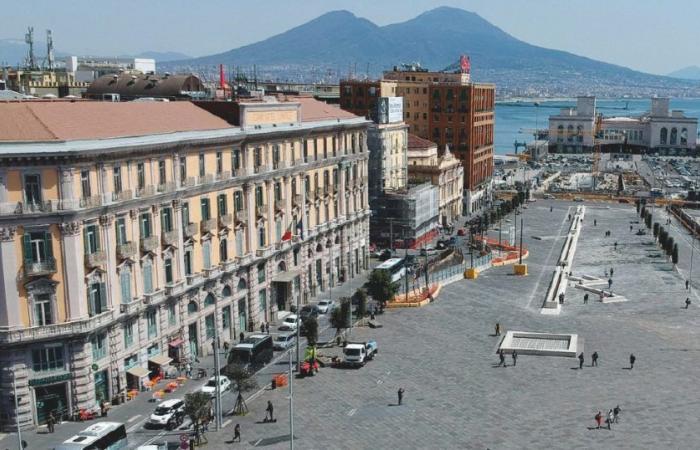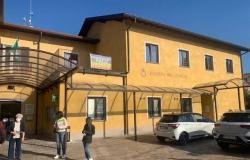The national databases such as Istat and the reports of the National Institutes of Health Control (Istituto Superiore Sanità) and Environmental Control (Ispra) constitute a very rich mine of data which, read carefully and fitted together correctly like in a puzzle, explain well the unique characteristic of Naples in the world. Naples is loved because it is among the most vital cities in the world. Naples wakes up every day between two volcanoes and here more than anywhere else you can feel the precariousness of life in its environmental context every day.
Over the last 40 years, our living environment, wonderful but dangerous, has become even more dangerous to the point of being deadly for life. mismanagement (desired and never opposed) of waste coming from the growing industrial activity without controls and linked to work under tax evasion regime, called “black work”, which in our country reaches up to 47% of all manufacturing activities (DDA data).
Yet another confirmation of this unique but deadly characteristic is offered to us in recent days by the first report of the Economy and Society Observatory produced by the Municipality of Naples. An operation, that of Palazzo San Giacomo, intended to photograph reality and to consequently make political choices to design the Naples of the future.
The reports shows a city that is definitely growing, with a gross domestic product of 27.4 billion euros and a very lively economic fabric. We looked for a change of “narration” from Naples Gomorrah which draws its strength precisely from growth in industry, culture and tourism. But Naples is the city that needs to transform “black” work into regular work, decisively emerging from the excess of irregularities in almost all manufacturing sectors, but also in services.
Any economic analysis starts from the GDP. Well, the report produced by the observatory coordinated by the professor Gaetano Vecchione of the Federico II University, uses Svimez data to calculate a GDP of 28.4 billion and a GDP per capita of 30,804 euros, higher than the Italian one which stands at 30,231 euros. “We are the first city to have an estimate of GDP,” says Vecchione proudly. According to the study, the Neapolitan GDP represents 25% of the total of the entire Campania Region and 7% of the South. A figure that is based above all on the service sector: as much as 87.3%. Only 12.3% of GDP comes from industry and 0.4% from agriculture.
There are 78,477 companies registered: 1,800 more than in 2020. But the vast majority are small businesses: 95.3% do not have ten employees and units with at least 50 employees are only 0.6%. Yet, even though we are talking about small businesses, the dynamism and growth are impressive. From the data of the report it emerges that “if the turnover of these companies were consolidated, as if they constituted a single large group, the total revenues in 2022 would amount to 28.652 billion eurosup 10.6% from 2021.”
But how much of this exceptional turnover is based on tax evasion that in Campania region has been recording its highest values at a national level for decades? The most accentuated growth is seen in the manufacturing sector buildings where there are 4,475 companies with an increase of 800 activities in just two years (+21.8% from 2019). The narrative of the increase in GDP through the superbonus is also confirmed by the Ispra reports on industrial waste which sees a growth of over 1 million tons/year in construction waste alone in 2022 alone (total 9.1 million tons/year), but with too much asbestos “disappearing” illegally disposed of within these numbers and who we find constantly and incorrectly killing throughout the Province.
And so this chaotic and vital economic growth turns into health damage which explains in an impeccable manner how the incidence records of lung cancer especially materialize mesothelioma which we have been recording for decades now both in western Naples (Bagnoli and its poorly done reclamation which has even worsened the situation) and in eastern Naples in the constant absence of health data produced by the local health authorities.
By analyzing the ratio between the amount evaded for every 100 euros of tax revenue collected, Campania evades at 17.2%. On the contrary, the areas with the greatest tax loyalty are the Autonomous Province of Trento, with an evasion rate estimated at8.6%How can we fail to notice that the parallel between quality of life, fiscal loyalty, absence of landfills and sites to be reclaimed in the area vs 2746 (Campania) remains constant to mark the opposites also in the health data between the Province of Naples and those of Trento and Bolzano? With an obvious and obligatory one relapse: lower life expectancy absolute that is recorded in the Province of Naples and Caserta.
The time has come to definitively understand that the excess mortality and incidence of cancer and all the chronic degenerative pathologies that have been recorded for decades in Naples reflect, or rather are pathogenetically linked, to its explosive “vitality” entrepreneurialism often founded on an excess of “black” work and an incorrect and deadly one industrial waste disposal: a “mortal vitality”!
Those who work illegally kill themselves but also others, the data now certifies this more and more clearly.
It is yet another confirmation that Saviano’s Naples (Gomorrah) and Alberto Angela’s Naples (Naples of culture and wonders) both exist, today as they have for centuries. And this is it exceptional contrast in which we live and die (in excess) every day which makes Naples unique in the world!






